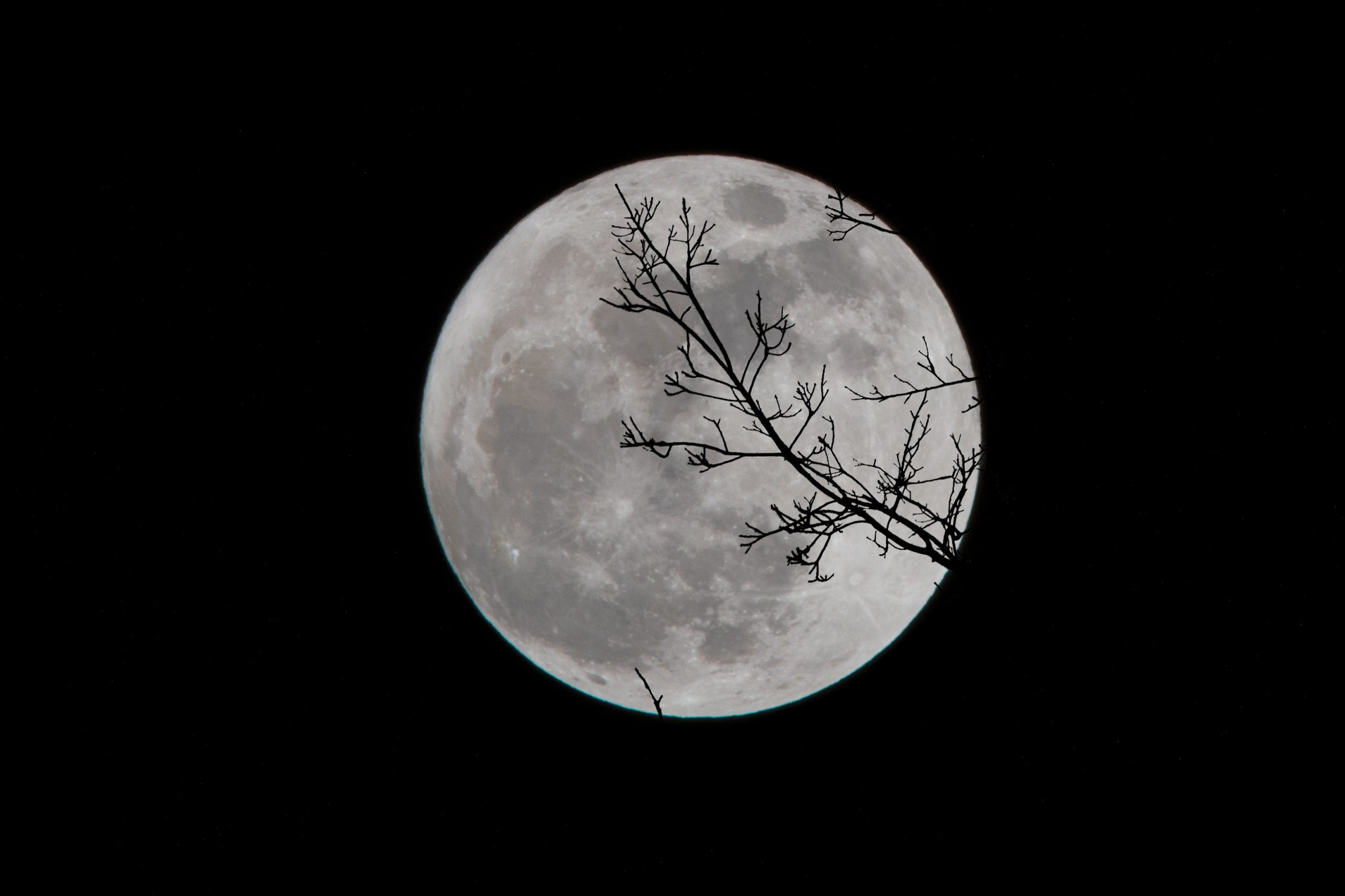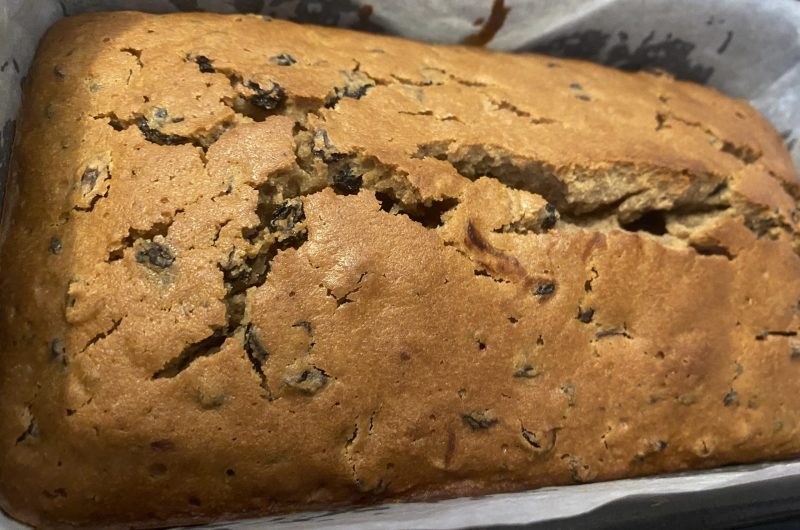In which we find out what happens when Madam Moon is absent from the sky, why you should always listen to a Wise-Woman and how any of this is relevant to a fruity tea-time snack.
In which we find out what happens when Madam Moon is absent from the sky, why you should always listen to a Wise-Woman and how any of this is relevant to a fruity tea-time snack.
A wonderful story from the wilds of the Carrlands of North Lincolnshire. It’s a little dark (literally) and the horrors and crawly creatures amongst the watery bogs and marshes make this the perfect story for when the nights are drawing in. Light a fire or pop a pretend one your television, get out the candles and be prepared to be just a touch scared in the best possible way.
Afterwards we discover a possible reason why this story is so surreal, how we treated malaria without quinine and what surprising crops are grown here.
The episode’s recipe for Lincolnshire Plumbread as well as a lot more information and some further reading can be found here:
https://hestiaskitchen.co.uk/2020/09/28/the-buried-moon/
The books and website resources I mentioned can be found here:
http://www.carrlands.org.uk/default.asp
A series of original sound compositions – combining spoken word, music and effects – inspired by, and set at, three locations in the agricultural landscape of North Lincolnshire
Investigating The Legends of the Carrs as published in Folk-Lore in 1891 – Maureen James
Cursed, a history of witchcraft and black magic in modern times. – Thomas Waters
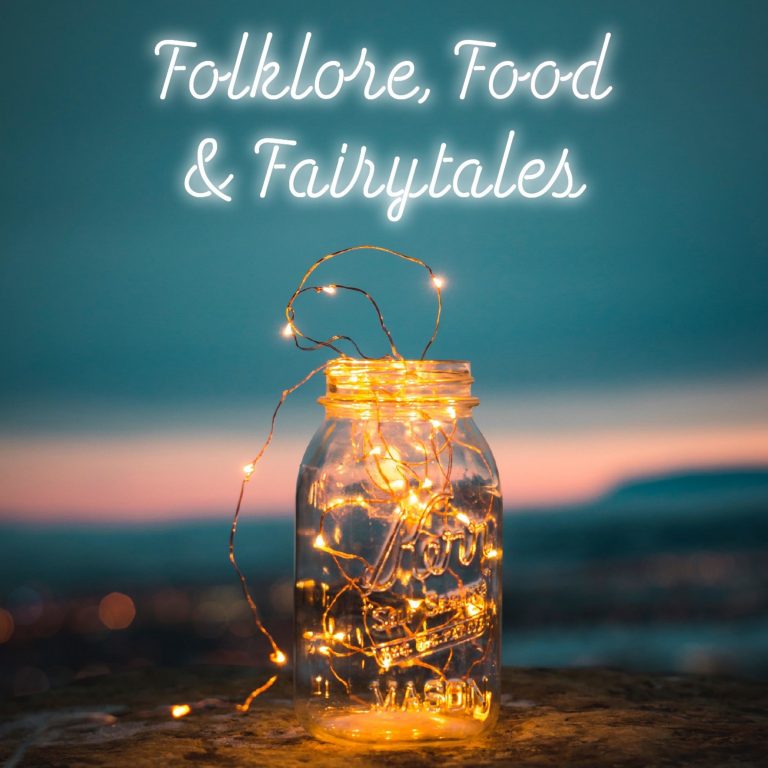
This was such an interesting story, I found it in a fantastic book called Edmund Dulac’s Fairy Book drawn by the beautiful illustrations. It’s a dark tale (literally) but I loved it’s surreal nature. The wonderful descriptions of the evil denizens of the swamp make it deliciously easy to tell.
A Little Background
I need to set the scene here, bear with me, its important for later. This story is set in the Carrlands of North Lincolnshire, a place that has changed dramatically since this story was told. The land is named for the Danishword for bog or marshland – Kjarr. The land would have been underwater for large parts of the year. As a result, there were many communities that were very isolated and they created their own stories and songs as well as medicines. Medicines were very important: there was a high prevalence of malaria (called by its common name of The Ague) in this area from the insects living in the stagnant pools left behind as the waters retreated.
They drank poppyhead teas brewed by themselves or even the local wise women, which I explore a little later. This medicine was for everyone, adults, children and livestock alike. Conveniently the white opium poppy grows very well here and many of the marsh people grew the poppies in their own gardens. Later commercial opium was available from chemists shops and commercial opium crops are grown there even now. This was possible after Enclosure turned the land from waterlogged seasonal pasture to arable agriculture.
The use of quinine to treat malaria was unknown in England then, although it was first used in Rome for that purpose in 1631 and was used treat other conditions for centuries previously in it’s native South America.
Why is the Geography So Important?
When these tales were first told the marshes were very dangerous places, malaria notwithstanding, with quicksand and deep pools. Wandering through the marshes at night was risking death, the light of the moon was literally a lifesaver. This story was clearly trying to teach the dangers of being in the bogs at night. It has also been claimed that some of the darker elements of the tale came about through the influence of excessive opium use and malaria in the population of the time.
Marie originally collected this tale amongst others in the Legends of the Carlands to be published in Folk-lore. They were then retold in More English Fairy Tales by Joseph Jacobs. There has also been some suggestion that Marie Balfour has invented at least some elements of the stories. This is because this story and several others are unique in European folktales. It is however very possible that they are so unique because they hale from an isolated watery land riven with opium misuse and malaria dreams.
There is a lot of other evidence that supports Marie Balfour. Maureen James provides excellent arguments in her favour on the Telling History website and in her PhD thesis. Dr James has investigated these tales at length and is far more eloquent so please visit her website for more information (however stick with me for the cake recipe).
Soundscapes
If you want to get more feel for the landscape there is fantastic project which has created a series of original sound compositions. These combine spoken word, music and effects inspired by the landscape. I’d recommend Snitterby Carrs, recording one. Details are in further reading section at the bottom of the blog.
Wise Women
This tale has a two important female characters and Moon aside, the Wise Woman is clearly important to the community. She is definitely viewed differently to the evil witches who hang out in the bog although they both have brews. There is not enough space here to discuss positive and negative witchcraft (and I’m also not qualified to discuss it). However, when communities believed in magic used for evil, there needed to be someone they could turn to to protect them who also used magic.
Thomas Waters has a well-researched book where he discusses Wise Women, Cunning Folk and Cunning Men & Women in more modern times. The book, mirror and her brews were her important tools, as were the phases of the moon. She gives the lack of moon as a reason she can’t divine for them in the story. The book could either have been the bible of a book of spells and remedies passed down to her.
Wise women provided counter charms, spells and divining for objects and the future as discussed in the rescue mission for the Moon. They were often midwives and made simple medicines for communities where a doctor was either too expensive or too far away. They weren’t often qualified and there were many different approaches. Some were more herbal in nature, others more spiritual or mystical. I definitely like the Nanny Ogg approach from Witches Abroad by the marvelous Terry Pratchett. Nanny would definitely have been a Wise-Woman in a less straightforward world than the Discworld.
“Nanny just tended to put a hot poultice on everything and recommend a large glass of whatever the patient liked best on the basis that since you were going to be ill anyway you might as well get some enjoyment out of it.”
Witches Abroad -Terry Pratchett
Tea Cures Everything
We’ve finally made it back to the Poppyhead Tea, see you knew I wouldn’t forget. I know you are all wonderfully sensible and level headed people but I must give a warning here, definitely do not make this at home. It could kill you (a vague disclaimer is nobody’s friend). There have been actual studies and since 2010 not less than 10 fatal cases have been reported to the FDA as elated to consumption of Poppy tea. However in the Carrlands at that time there was very little choice of treatments and The Ague was worse than the cure.
We sadly have so few records of these remedies, only the ones that appeared in books, which were definitely only accessible to the rich. The people of the Carrlands were definitely not that, they lived an exceptionally hard life. I’ve listed a few below for interest. It also demonstrates why you might think turning to the local Wise-Woman was an excellent idea. There is also one for Poppy Cordial which has two gallons of brandy. You would definitely feel better, if only briefly. I’ve included the link to both books but you’ll have to find the Poppy Cordial in it yourself (there I think I’m covered).
Pick a Treatment, Any Treatment
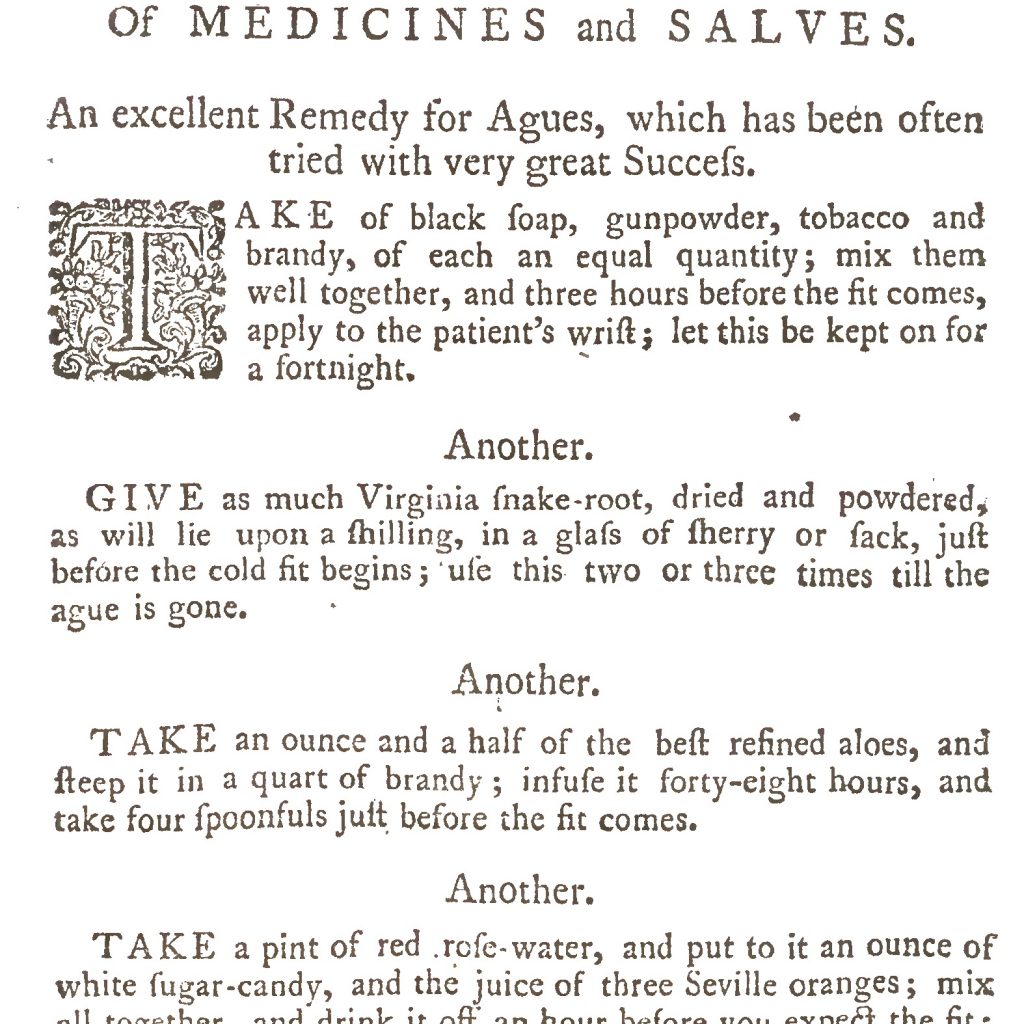

Finally Cake
I would have loved to have given you an effective herbal remedy as the recipe this week but I’ve drawn the line at one of these historic remedy recipes. They are essentially just a lot of quite delicious sounding alcohol infusions. I’ve also decided against testing some herbal remedies and infusions on the internet on your behalf. For the sake of your health, please remember natural doesn’t always mean safe. Arsenic is natural but you wouldn’t sip on arsenic tea for your headache or stomach disorder. At least, I hope you wouldn’t, even if it is excellent for your complexion (in the short-term at least).
I’m not anti herbal brews, I have friend who is a qualified medical herbalist who makes very effective herbal remedies as well as pretty effective infusions. It’s just that they mostly taste awful even though the sleepy-time one works like a dream, if you’ll pardon the pun. The trick for getting through it is lots and lots of honey.
So on to something that tastes lovely and is connected to the story in a slightly less tenuous manner than usual. I have chosen Plum Bread, which is a proud speciality of Lincolnshire just like the tale. There is a lot of information on this but the general consensus seems to be that the best modern version is made by Myers Bakery who have been making it to the same recipe since 1901. Even the Queen likes it, there is proof in the form of a letter from her Master of the Household. It seems she received one as a present and then ordered another one!
Or is it a Loaf?
The famous loaf is exactly that, an enriched dough fruit bread that you can have as is or even toast it for a enjoyable hot snack. This isn’t the only one, there is also the other kind which is more of a cake using raising agents now but originally using yeast. It is more likely to be made at home. You soak fruit in tea overnight and then combine it with flour, sugar, spices and an egg and bake at a low heat for about an hour.
Have I mentioned yet that it doesn’t have plums in it? I meant to, as it seems to be the first thing anyone mentions when they share the recipe. Anyway, it doesn’t because plums is just generally shorthand for dried fruit in old recipes. I’ve put a picture below of a couple of recipes for plum cake from a historic cookbook by Eliza James just to prove I haven’t made it up.
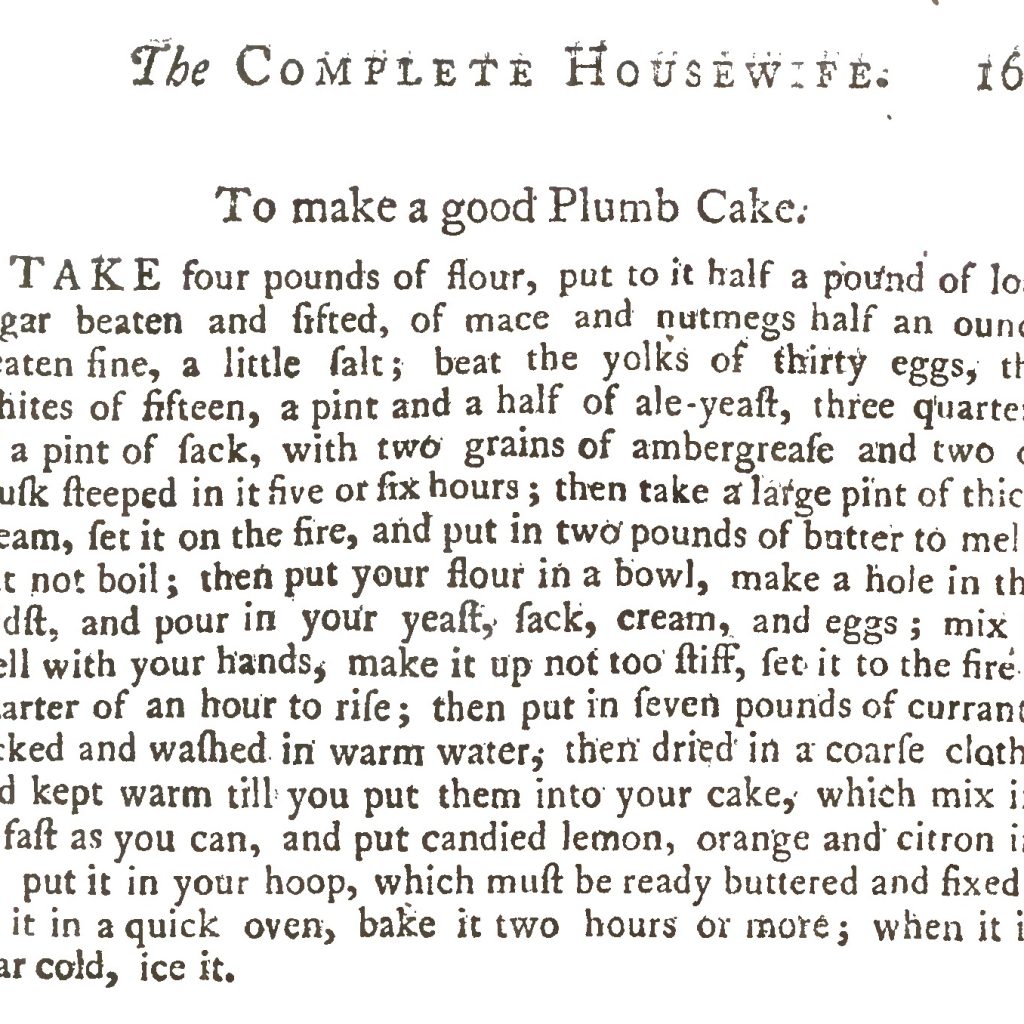

On that note, don’t use this as excuse to use dried apricots. I love dried apricots, see my previous piece on Jesper and the Hares if you’d like a recipe. Its a lovely light-hearted story too. This recipe is not the place for dried apricots. You could consider prunes or dates but you’d have to cut them up first which seems a shame when its such an easy recipe. This is the perfect packed lunch snack or breakfast snack or afternoon tea accompaniment. It is also really great spread with some lovely salted butter or a nice slice of cheddar. It has a lot of fruit in but is not overly sweet and is very quick as long as you don’t mind spending 5 minutes weighing some fruit and boiling a kettle the night before.
Lincolnshire Plumbread
8
servings10
minutes1
hour15
minutesA wonderful spiced fruit tea bread
Ingredients
175g currants
175g sultanas
3 teabags, I use Lapsang Souchong for the smoky taste
300ml hot water
275g self-raising flour
1 tsp mixed spice
1/2 tsp ground cinammon
a fine grating of nutmeg
150g light muscovado sugar
1 large free-range egg, beaten
butter, for greasing, plus extra to serve
Directions
- Put the currants and sultanas in a bowl with the teabags and pour over the hot water. Stir, cover and leave to soak overnight for the liquid to absorb.
- Preheat the oven to 150C/130C Fan/Gas 3½. Grease a 900g/2lb loaf tin and line with non-stick baking paper or one of those lovely loaf tin liners that I always forget to buy.
- Remove teabags from the bowl and squeeze then dispose of appropriately
- Add the flour, sugar and egg to the bowl of soaked fruit (if there is a little excess liquid this is fine) and mix thoroughly.
- Spoon into the prepared tin and level the top. Bake for 1¼ hours, or until the cake is risen and just firm to the touch, it may need up to another 30 mins but my oven runs hot. Leave to cool in the tin for about 10 minutes.
- Turn out the cake and remove the paper. To serve, cut into fairly thick slices and spread with butter to serve.
Notes
- I often use caster or even granulated sugar when I have no soft brown sugar, its still good but you lose a little of the caramel flavour.
- Choose your favourite teabag, I’m probably kidding myself that the taste carries over.
Further Reading
Edmund Dulac’s Fairy Book – Fairy Tales of the Allied Nations
“History of Quinine:” Friedrich A. Flückiger and Daniel Hanbury, Pharmacographia: A history of the principal drugs of vegetable origin, met with in Great Britain and British India (London, England: Macmillan and Co., 1874), pages 302-331: Cortex Cinchonæ Archived 11 November 2014 at the Wayback Machine.
Balfour, M. C. “Legends of the Cars.” Folklore, vol. 2, no. 2, 1891, pp. 145–170. JSTOR, www.jstor.org/stable/1253522. Accessed 26 Sept. 2020.
More English Fairy Tales Joseph Jacobs and John Dickson Batten
Investigating The Legends of the Carrs as published in Folk-Lore in 1891 – Maureen James
A series of original sound compositions – combining spoken word, music and effects – inspired by, and set at, three locations in the agricultural landscape of North Lincolnshire
Cursed, a history of witchcraft and black magic in modern times. – Thomas Waters
The Complete Housewife or Accomplished Gentlewoman’s Handbook E. Smith, 1773
The Accomplish’d Housewife Charles Carter, 1732
The original Lincolnshire Plumb Loaf

